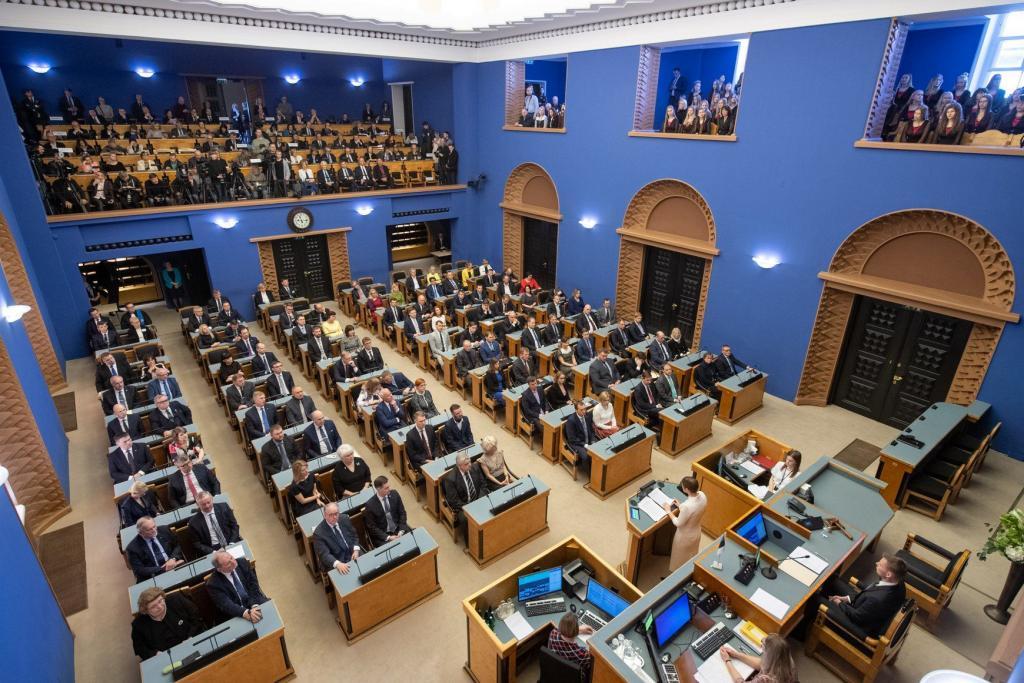Chris Glew argues that Estonia needs a different voting system – as currently, there’s a lack of a direct link between the voter and the MP.*
For those unaware, Estonia’s method of electing its parliamentarians is the d’Hondt method of proportional representation. The country is divided into 12 regions, each selecting between six and 13 people to be sent to the country’s parliament, Riigikogu, via a convoluted and complex formula that it is best we do not dwell on. Therein lies what I see to be the fundamental problem – a lack of a direct link between the voter and the representative.
I would expect that those in favour of retaining the status quo will point out that since I don’t live or vote in Estonia, I cannot reasonably be expected to know what I’m talking about. Not so, for it is this same process that the United Kingdom uses to elect its MEPs (members of the European Parliament), and one to which I am bitterly opposed.
Fundamental principles of democracy
Having been something of a political animal since I was a child, I’ve often found time to write to or meet my local member of the UK parliament to discuss various issues, either of national or local importance. This is a straightforward process as each geographically assigned constituency has one representative in Westminster to which such concerns can be addressed. Whether you voted for them or not, as the website theyworkforyou.com helpfully reminds us, they do, indeed, work for us.
Yet when it comes to concerns I have of a European nature, I am failed miserably. For the purpose of selecting MEPs, the UK is divided, like Estonia (for national elections), into 12 districts, each choosing a set number of representatives.
My constituency – London – currently sends eight MEPs to Strasbourg. So to whom can I go to with my concerns? Apparently, one of eight people. Quite how I decide which person to go to isn’t specified – do I go to those I voted for? Those of the same political persuasion? Will they even be interested? After all, they don’t have a specific group of people to which they, and they only, are responsible.
Thus, one of the most fundamental principles of democracy (in my view, at least), is broken – the link between the elector and the elected.
Reforming Estonia’s voting system
Of course, a simple plurality system (such as that used in the UK for national MPs) is not without its drawbacks. Whilst it does retain the link between the represented and the representor, it makes it notoriously hard for smaller, minority parties to get their voice heard. Governments tend to be stronger, with absolute parliamentary majorities being the norm and coalitions a “once in a generation” affair – a young democracy such as Estonia should be rightly suspicious of a government that is too powerful.
Yet it is possible to employ a system where the link between parliament and the public is maintained and yet is still proportional – the “regional top-up” method.
The country would be divided into X number of constituencies (perhaps 70) who vote for their individual parliamentary representative. The existing 12 regions are retained, sending a combined total of 31 people to parliament who are chosen in proportion to the number of votes each party receives there.
Hence every single voter in Estonia will have a “local” member of parliament – somebody who is elected by and is accountable to them. If the voters decide that their local representative hasn’t done enough to represent them, they can be easily voted out of office at the next election.
It would be the end for the current system of “cronyism” whereby candidates are selected from a list put forward by political parties. If there are two well qualified candidates from the same region, they can both still be elected – one locally and one regionally. And best of all, the 70 constituency members are directly accountable to those who live in the area they represent. This direct, constituency link is something that can never be valued too highly.
I know a lot of Estonian politicians would hate my idea. Ask yourself why.
The opinions in this article are those of the author. * This article was lightly amended on 20 June 2019. Cover: The opening session of the 14th Riigikogu. Photo by Erik Peinar.

